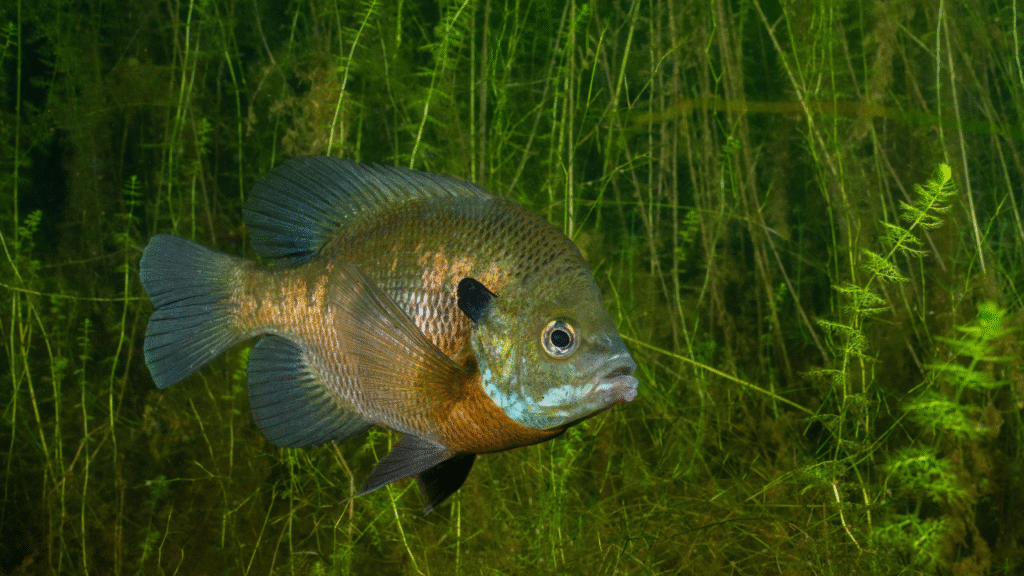Bluegill fishing is a blast, plain and simple. It’s the kind of fishing that makes you feel like a kid again, no matter how old you are. It’s perfect for new anglers, families, or anyone looking for a fun day by the water. Plus, bluegills are delicious if you decide to keep a few. You don’t need fancy gear or years of experience to catch them, and with a little know-how, you can have a great time. I’ve been fishing for bluegills for decades, and I’m excited to share some tips to help you get started, catch more fish, and maybe even land a monster.

Where to Find Bluegills
Bluegills are everywhere—lakes, ponds, rivers, and streams across almost every state (sorry, Alaska). You don’t have to travel far to find them. Your local pond or community lake is likely home to plenty. Some spots, like hidden ponds in the Midwest or Southern reservoirs, are famous for giant bluegills, but good fishing is closer than you think.
Bluegills love shallow water when conditions are right. In spring, they spawn in protected coves or near shore, often around docks, fallen trees, or weeds. During summer, they might move to deeper water but stick to shaded spots like under piers. In fall, look for them in shallow brush near the bank. In winter, they school up in deeper areas, like flats or drop-offs, where you can find them stacked if you have access.

Simple Gear for Bluegill Fishing
You don’t need much to catch bluegills, which is part of the fun. Here’s a basic setup:
- Rod and Reel: A light or ultralight spinning rod (5-6 feet) with a small reel is perfect. A push-button spincast combo works great for kids or beginners. I’ve also started using a Bait Finesse System for extra precision, but it’s not necessary.
- Line: Use 4-pound monofilament line for flexibility and easy casting.
- Hooks and Weights: Tie on a No. 6 or No. 8 Aberdeen hook. Add a small split shot 12-18 inches above the hook for weight.
- Bobber: Clip a small bobber 1-2 feet above the split shot to keep your bait at the right depth.
- Bait: Red worms, crickets, or nightcrawlers are hard to beat. A small pack from a bait shop will do the trick.
For a bottom-fishing option, try a drop-shot rig. Tie a 1/8-ounce bell sinker below a small hook with a short (6-8 inch) leader. Drop it to the bottom with a worm or cricket to target bigger bluegills feeding on bugs or snails.

Artificial Lures for Bluegills
Live bait is great, but small lures can be just as effective and fun. Here are my favorites:
- Tiny Jigs: A 1/32-ounce jig with a 1-inch grub or curly-tail plastic catches bluegills all year. Add a tiny piece of worm or a scent nugget (like Berkley PowerBait) to boost bites.
- Small Crankbaits: A 1-inch crankbait mimics small baitfish and draws impulsive strikes, especially in spring.
- Inline Spinners: Small spinners, like a Mepps Aglia, add flash and vibration to attract bluegills and other panfish.
If you’re into fly fishing, try a small popper or sponge spider. No fly rod? Use a clear casting bubble above the fly to cast it with a spinning rod, then twitch it along the surface.

How to Fish for Bluegills
Bluegills are cooperative, so fishing for them is straightforward. Here’s how to get started:
- With a Bobber: Cast your baited hook near cover—think docks, trees, or grass lines. In spring, try shallow coves where bluegills spawn. Let the bobber sit, and watch for it to dip or move. If you get a bite, focus on that spot, as bluegills often school together.
- With Lures: Cast a small jig or crankbait along the bank, reeling slowly to bump the bottom or brush. If you’re fishing deeper water, let the lure sink before retrieving. Short casts work fine—bluegills don’t need long-distance presentations.
- Bottom Fishing: Drop a drop-shot rig near cover or on a flat. Let it sit or drag it slowly. This is great for winter or when bluegills are feeding low.
When you find one bluegill, there’s usually more nearby. Slow down and work the area carefully to catch the whole school.
Best Times to Fish for Bluegills
Spring is hands-down the best time for bluegill fishing, especially from shore. They spawn in water temperatures around 70°F, usually after bass and crappie. Look for their nests—clusters of light or dark spots on the bottom in shallow water. Polarized sunglasses help spot these. Fish the backs of coves or under docks for spawning fish.
Mornings and afternoons are great in spring when the sun is up and bluegills are active. In summer, try early or late in the day to avoid the heat. Winter fishing can be awesome if you find deep schools—drop a jig or drop-shot rig into 15-30 feet of water near structure, and you might catch fish all day.

Why Bluegills Are Special
Bluegills are the perfect fish for anglers of all ages. They’re easy to catch, fight hard for their size, and taste amazing if you keep a few (check local regulations). Fishing for bluegills is how many of us fell in love with the sport, and it’s a great way to get kids or new anglers hooked. I spend a few weeks every spring chasing them, often with friends or family, and it’s always a highlight of the year.
With these tips, you’re ready to hit your local pond or lake and catch some bluegills. Keep it simple, have fun, and you might just land a giant—or at least make some great memories.


Add comment